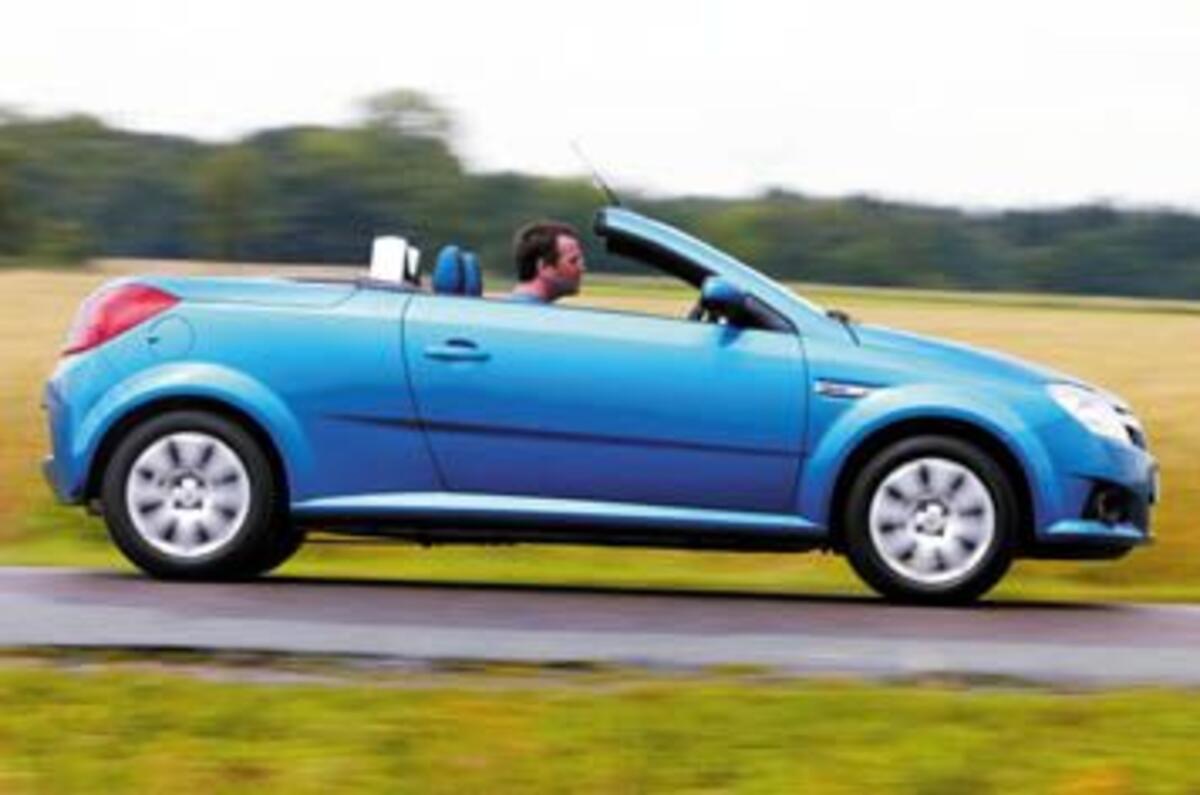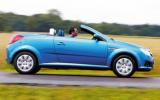Peugeot dealers all over the country will be tightening their belts this summer. Because if the arrival of the Mini convertible isn’t enough to put 206 CC sales into intensive care, Vauxhall’s back-from-the-dead Tigra, complete with 206 copycat folding metal roof, will surely finish the job.
Manufacturers credit much of the growth in the lucrative convertible market to the arrival of retractable hard-tops that add practicality and security, and now Vauxhall is the latest to seek a piece of the action.
Sensibly, Vauxhall hasn’t tried to squeeze an extra pair of near-useless seats behind the driver and passenger in the Tigra as Peugeot does in the 206, though. Instead, the Tigra is a strict two-seater, and all the better for it as there’s a decent amount of seat adjustment and a driving position that the spine-mangling 206 can only aspire to.
The quality of materials in the Vauxhall and its fit and finish also appear superior to the Peugeot’s, although the Tigra’s Corsa-derived interior isn’t as dramatic as its exterior look.
The Tigra’s roof may ape the 206’s by retracting electrically into a cavity behind the passenger compartment, but Vauxhall’s designers have made a far neater job. Rather than the two roof sections folding flat, one on top of the other as they do in the Peugeot, the Tigra’s rear window and pillar drops almost vertically, and the main roof panel then stores above this to preserve boot space.
The result of this design, executed by French firm Heuliez (which also builds the Tigra), is a load bay of 250 litres with the roof folded. This compares to the 206’s 175 litres with its roof stowed. Pop the roof back into place and the Tigra can accommodate 440 litres of luggage, comfortably ahead of the Peugeot’s 410 litres.
The Vauxhall augments this with a shelf behind the seats that can store 70 litres and is big enough to take a sports bag. Another bonus over the 206 is that even with the roof retracted, access to the boot space is good, and the partition that must be folded back to allow the roof to drop provides a solid boot wall.
One downside of the Tigra’s boot arrangement is its opened and closed electrically. It’s a one-touch operation when opening it, but you must keep your finger on the boot button to close it, which is annoying when the rain has set in. A single slam would be much quicker.
Folding the Tigra’s roof is far simpler. Undo a couple of latches and electric motors do the rest. Twenty seconds later you’re free to enjoy the sunshine. Keep the side windows raised and motorway driving is easily manageable without upsetting your hair stylist. Lower the windows for cruising the city streets and 30mph will not leave you ruffled, either.
The steep rake of the windscreen helps direct most wind blast over the car’s occupants, but caution is needed when entering and exiting the Tigra with the roof folded as the screen’s upper edge is ideally positioned to catch unsuspecting foreheads. Taller drivers may also find the top rail infringing on their forward vision, although the driver’s seat has height adjustment to help.
And when it does rain, the roof promises to prove completely resistant to even the heaviest downpour, and refinement is very good up to 70mph. Little wind chatter is audible and conversation does not require raised voices, although some road noise does filter through.


















Add your comment